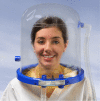A new horizon for the use of non-invasive ventilation in patients with acute respiratory distress syndrome
- PMID: 27761452
- PMCID: PMC5066051
- DOI: 10.21037/atm.2016.09.17
A new horizon for the use of non-invasive ventilation in patients with acute respiratory distress syndrome
Abstract
Non-invasive ventilation (NIV) has assumed an important role in the management of acute respiratory failure (ARF). NIV, compared with standard medical therapy, improves survival and reduces complications in selected patients with ARF. NIV represents the first-line intervention for some forms of ARF, such as chronic obstructive pulmonary disease (COPD) exacerbations and acute cardiogenic pulmonary edema. The use of NIV is also well supported for immunocompromised patients who are at high risk for infectious complications from endotracheal intubation. Selection of appropriate patients is crucial for optimizing NIV success rates. Appropriate ventilator settings, a well-fitting and comfortable interface, and a team skilled and experienced in managing NIV are key components to its success. In a recent issue of the Journal of the American Medical Association, Patel et al. reported the results of their single-center trial of 83 patients with acute respiratory distress syndrome (ARDS) who were randomly assigned to NIV delivered via a helmet or face mask. Patients assigned to the helmet group exhibited a significantly lower intubation rate and were more likely to survive through 90 days. This perspective reviews the findings of this trial in the context of current clinical practice and in light of data from the literature focused on the potential reasons for success of NIV delivered through a helmet compared to face mask. The implications for early management of patients with ARDS are likewise discussed.
Keywords: Acute respiratory distress syndrome (ARDS); acute respiratory failure (ARF); face mask; helmet; non-invasive ventilation (NIV).
Conflict of interest statement
The author has no conflicts of interest to declare.
Figures

Comment on
-
Effect of Noninvasive Ventilation Delivered by Helmet vs Face Mask on the Rate of Endotracheal Intubation in Patients With Acute Respiratory Distress Syndrome: A Randomized Clinical Trial.JAMA. 2016 Jun 14;315(22):2435-41. doi: 10.1001/jama.2016.6338. JAMA. 2016. PMID: 27179847 Free PMC article. Clinical Trial.
Similar articles
-
ISCCM Guidelines for the Use of Non-invasive Ventilation in Acute Respiratory Failure in Adult ICUs.Indian J Crit Care Med. 2020 Jan;24(Suppl 1):S61-S81. doi: 10.5005/jp-journals-10071-G23186. Indian J Crit Care Med. 2020. PMID: 32205957 Free PMC article.
-
Effect of Noninvasive Ventilation Delivered by Helmet vs Face Mask on the Rate of Endotracheal Intubation in Patients With Acute Respiratory Distress Syndrome: A Randomized Clinical Trial.JAMA. 2016 Jun 14;315(22):2435-41. doi: 10.1001/jama.2016.6338. JAMA. 2016. PMID: 27179847 Free PMC article. Clinical Trial.
-
Noninvasive ventilation for acute respiratory distress syndrome: the importance of ventilator settings.J Thorac Dis. 2016 Sep;8(9):E982-E986. doi: 10.21037/jtd.2016.09.29. J Thorac Dis. 2016. PMID: 27747041 Free PMC article.
-
Clinical review: Helmet and non-invasive mechanical ventilation in critically ill patients.Crit Care. 2013 Apr 25;17(2):223. doi: 10.1186/cc11875. Crit Care. 2013. PMID: 23680299 Free PMC article. Review.
-
Noninvasive mechanical ventilation in early acute respiratory distress syndrome.Pol Arch Intern Med. 2017 Sep 29;127(9):614-620. doi: 10.20452/pamw.4088. Epub 2017 Aug 17. Pol Arch Intern Med. 2017. PMID: 28820175 Review.
Cited by
-
Prediction model for patients with acute respiratory distress syndrome: use of a genetic algorithm to develop a neural network model.PeerJ. 2019 Sep 16;7:e7719. doi: 10.7717/peerj.7719. eCollection 2019. PeerJ. 2019. PMID: 31576250 Free PMC article.
References
Publication types
LinkOut - more resources
Full Text Sources
Other Literature Sources
